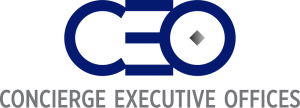
With a meeting agenda, meetings tend to stay on-topic. Most of us have spent time in meetings discussing things that aren’t relevant, all while making no headway on the business items that need attention. Proper meeting planning can help avoid that. Creating a meeting agenda will notify everyone involved of what will be covered. They allow higher levels of engagement and contribution during those meetings because participants will come prepared.
What is a Meeting Agenda?
It’s pretty simple. A meeting agenda is just a list of items you hope to cover during your meeting. The primary purpose is to give participants a clear outline of what should happen during the meeting, who will lead each task, and how long each discussion should take. Having this information helps ensure that time is being used efficiently and effectively. In addition, an agenda will determine the form and structure of your meeting so you can plan what will be accomplished.
Key elements to a meeting agenda:
Topic
Your meeting agenda should put everyone on the same page. Every meeting you hold should be result-driven. Set the topic of your meeting. What is going to be discussed?
Goals
Set at least one clear goal for every meeting. Do you need to start a new project, get status reports, or have a brainstorming session?
Setting goals will help determine how long your meeting should be, where it will be held, and who needs to attend.
Key Discussion Points
Have ideas about the topics that you need to cover. List each question you need an answer to during the meeting. Then, determine who will be discussing that question and how much time needs to be allotted. Prompting important points ensures you invite discussion and get all the required information for each topic.
Allotted Time for Each Discussion Point
Estimate how much time you plan to spend on each specific point. Doing so will ensure that you have enough time to cover all the topics you have planned for. It also helps attendees adjust comments and questions to fit the timeframe.
You can optimize your timeframe by giving more time to the topics you know will take longer to discuss, or you can schedule points of higher importance earlier in the discussion to ensure they are covered. You may even limit time on topics to streamline the conversation and encourage quick decisions.
Decisions Reached
Make notes of important decisions that are reached. Include those attendees that aided in reaching that decision. The notes will serve as a record of who assisted in each decision made. If questions regarding that decision arise, your meeting agenda and meeting minutes may be referenced.
Notes & Follow-Ups:
Making notes of items to be covered in subsequent meetings will ensure that future meetings cover new discussion topics. For example, make a note if you need status reports or follow-ups on projects. Follow up with individuals following the meeting. Do you need to meet with a specific team or team member? These notes will serve as a checklist for upcoming meetings.
Before concluding your meetings, do a short recap of what was discussed and the decisions made. If your meeting includes a note-taker or minute-taker, ensure they have recorded all the essential points and decisions. Minutes may be provided to attendees following the meeting.
Agendas do not have to be overwhelming or detailed. They are a simple outline to ensure your meeting runs efficiently and effectively. They let your team know that you respect their time. The more focused the agenda, the more effective your meeting will be. The more effective the meeting, the more likely the participants will feel energized about tasks and eager to complete them. They will also be more likely to take the necessary follow-up steps and make it genuinely productive.
Related topic: How to Conduct an Effective Team Meeting; How to take minutes in a meeting
CEO Concierge Executive Offices, located in Naples, Florida, offers the ideal combination of space, design, technology, and amenities to optimize the work experience and support your daily living requirements.










